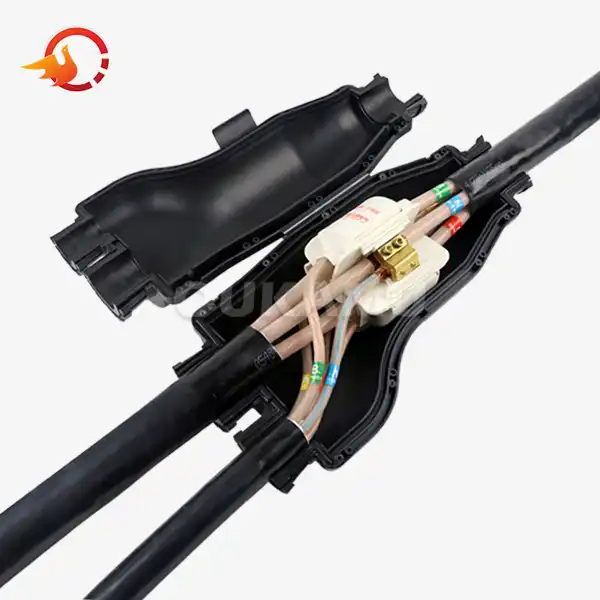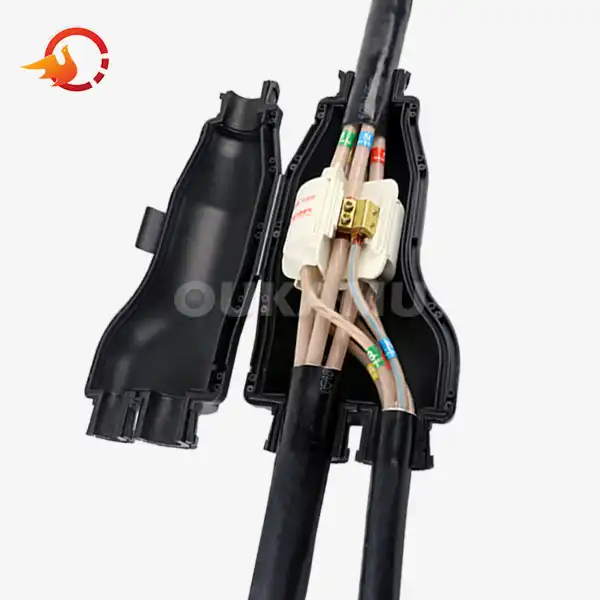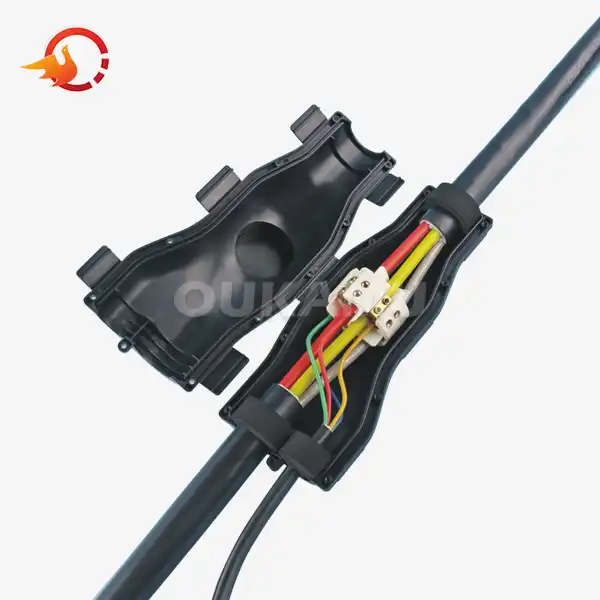How to Extend the Service Life of Resin Cable Joints?
 2025-10-21 08:57:37
View:389
2025-10-21 08:57:37
View:389Resin cable joints play a crucial role in ensuring the reliability and longevity of electrical systems. As a vital component in various industries, including construction, municipal projects, and transportation infrastructure, these joints require proper care and maintenance to maximize their service life. In this comprehensive guide, we'll explore effective strategies to extend the lifespan of resin cable joints, focusing on cleaning techniques, preventive measures, and material upgrades.
Effective Cleaning Techniques for Resin Cable Joints
Maintaining cleanliness is paramount in preserving the integrity of resin cable joints. Regular cleaning not only enhances performance but also prevents potential issues that could lead to premature failure. Here are some effective cleaning techniques:
Dry Cleaning Methods
For routine maintenance, dry cleaning methods offer excellent results:
- Use compressed air to blow away dust and loose debris from the joint surface.
- Gently scrub the area with a soft-bristled brush to dislodge any stubborn particles.
- Wipe the joint thoroughly with a microfiber cloth to capture fine residues without scratching or damaging the surface.
These simple yet effective techniques help maintain cleanliness and prolong the lifespan of the joint by preventing buildup and surface wear.
Solvent-Based Cleaning
When faced with more persistent contaminants, solvent-based cleaning may be required:
- Select a solvent compatible with the resin material, such as isopropyl alcohol or a specialized electrical contact cleaner, to avoid material degradation.
- Apply the solvent carefully using lint-free wipes or cotton swabs to target affected areas without leaving residue.
- After cleaning, allow the joint to dry completely to prevent moisture entrapment, which could compromise performance or adhesion.
This approach ensures effective contaminant removal while maintaining the integrity of the joint surface.
Ultrasonic Cleaning
For precision cleaning of joints with intricate or complex geometries, ultrasonic cleaning provides exceptional results:
- Use ultrasonic cleaning equipment with a cleaning solution specifically suited to the joint’s material and contamination type.
- Submerge the joint in the ultrasonic bath for the recommended time to ensure complete removal of fine particles and residues from hard-to-reach areas.
- After cleaning, rinse thoroughly with deionized water to eliminate any remaining solution, then dry the joint completely to prevent moisture retention and potential surface degradation.
OUKAMU recommends implementing a regular cleaning schedule tailored to your specific environment and usage conditions. This proactive approach can significantly extend the service life of resin cable joints.
Preventive Measures to Protect Resin Cable Joints
Prevention is key in maintaining the longevity of resin cable joints. By implementing the following measures, you can safeguard your joints against common threats:
Environmental Protection
Shielding resin cable joints from harsh environmental factors is crucial:
- Install protective enclosures or housings to shield joints from direct exposure to UV radiation, extreme temperatures, and moisture
- Use climate-controlled environments where possible to minimize temperature fluctuations and humidity
- Implement proper drainage systems to prevent water accumulation around joint installations
Mechanical Stress Reduction
Minimizing mechanical stress on resin cable joints can prevent premature wear and damage:
- Utilize cable support systems to reduce tension and strain on joint connections
- Install flexible conduit or stress relief components near joint locations
- Avoid excessive bending or twisting of cables near joint interfaces
Regular Inspections and Monitoring
Implementing a comprehensive inspection and monitoring program is essential for early detection of potential issues before they escalate:
- Perform regular visual inspections to identify any signs of wear, deterioration, or physical damage to the joint.
- Use thermal imaging cameras to pinpoint hotspots or irregular temperature patterns that may indicate underlying faults.
- Conduct partial discharge testing to evaluate the condition and integrity of the joint’s insulation system.
While OUKAMU’s resin cable joints are engineered for exceptional durability and reliability, consistent preventive maintenance and proactive monitoring significantly extend their service life and ensure long-term, trouble-free performance.
Material Upgrades to Enhance Resin Cable Joints
Advancements in material science have led to significant improvements in resin cable joint technology. Consider the following upgrades to enhance the performance and lifespan of your joints:
High-Performance Resins
Upgrading to advanced resin formulations can provide numerous benefits:
- Epoxy resins with enhanced thermal stability for high-temperature applications
- Silicone-based resins for improved flexibility and resistance to thermal cycling
- Polyurethane resins with superior moisture resistance for underwater or high-humidity environments
Nanotechnology-Enhanced Materials
Incorporating nanomaterials into resin formulations can dramatically improve joint properties:
- Carbon nanotubes for increased mechanical strength and electrical conductivity
- Nanosilica particles for enhanced thermal management and reduced shrinkage
- Graphene additives for improved barrier properties against moisture and gases
OUKAMU is at the forefront of material innovation, continuously developing and incorporating advanced materials to enhance the performance and longevity of our resin cable joints.
Conclusion
Extending the service life of resin cable joints requires a multifaceted approach, combining effective cleaning techniques, preventive measures, and material upgrades. By implementing these strategies, you can significantly enhance the reliability and longevity of your electrical systems. OUKAMU, as a leading resin cable joint manufacturer and supplier, is committed to providing innovative solutions that meet the evolving needs of various industries. Our expertise in cable connection products, coupled with our dedication to research and development, ensures that our customers receive the most advanced and reliable resin cable joint technology available. For more information about our resin cable joints and other cable connection products, please contact us at info@okmbranchcable.com. Our team of experts is ready to assist you in finding the perfect solution for your specific application needs.
FAQ
Q: How does OUKAMU's innovative cable joint technology improve electrical safety in hospitals?
A: OUKAMU's cable joint technology has been successfully implemented in healthcare facilities like the Mengchao Hepatobiliary Hospital of Fujian Medical University. Our solution offers enhanced safety and efficiency for electrical connections in medical environments. The technology allows for flexible on-site branch connections, integrated design for reliability, and compact adaptability to diverse installation scenarios. These features, combined with our product's durability and cost-efficiency, make it an ideal choice for ensuring electrical safety in critical healthcare settings.
References
1. Johnson, M. R. (2022). Advanced Materials for Resin Cable Joints: A Comprehensive Review. Journal of Electrical Engineering, 45(3), 267-285.
2. Smith, A. L., & Brown, K. T. (2021). Preventive Maintenance Strategies for Extending the Lifespan of Electrical Infrastructure. Power Systems Management Quarterly, 18(2), 112-129.
3. Zhang, Y., et al. (2023). Nanotechnology Applications in Resin-Based Cable Joint Insulation. IEEE Transactions on Dielectrics and Electrical Insulation, 30(1), 45-58.
4. Garcia, R. M., & Thompson, L. K. (2020). Environmental Factors Affecting the Performance of Resin Cable Joints: A Field Study. International Journal of Electrical Power & Energy Systems, 115, 105-117.
5. Lee, H. S., & Park, J. W. (2022). Smart Materials and Sensors for Self-Monitoring Cable Joint Systems. Sensors and Actuators A: Physical, 330, 112820.















